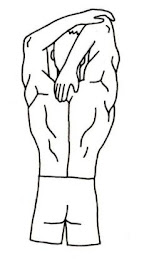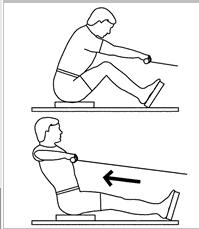
In considering the trunk or "core" of the body, which is basically everything from the pelvis up to the rib cage, in regards to stretching there is really no way to isolate one specific muscle or muscle group. We'll therefore consider stretching exercises which stretch all the multitude of muscles involved in both the abdominal and lower back region.
This area is strategically significant in regards to stretching and fitness for several reasons. The area between the pelvis and rib cage not only holds in the majority of our bodily organs (intestines, kidneys, liver, spleen, and so forth) it is also very vulnerable to injury due to the fact that this region provides all the stability for the upper trunk and arm movements and activities, w ith only the lower spine and lower trunk musculature for support.
ith only the lower spine and lower trunk musculature for support.
 ith only the lower spine and lower trunk musculature for support.
ith only the lower spine and lower trunk musculature for support.It is referred to as "the core" of the body because all upper and lower body movements are stabilized and coordinated through the contraction and stability of the abdominal and lower back regions. Stretching this area is therefore a critical part of any flexibility and fitness program to prevent injury and help maintain proper postural alignment.














 Intermediate Quad Stretching
Intermediate Quad Stretching Advanced Quadriceps Stretches
Advanced Quadriceps Stretches




 These stretches can be done for several repetitions as well as any other stretch. Remember, treat your Hammies right, and they will treat you right!
These stretches can be done for several repetitions as well as any other stretch. Remember, treat your Hammies right, and they will treat you right!


